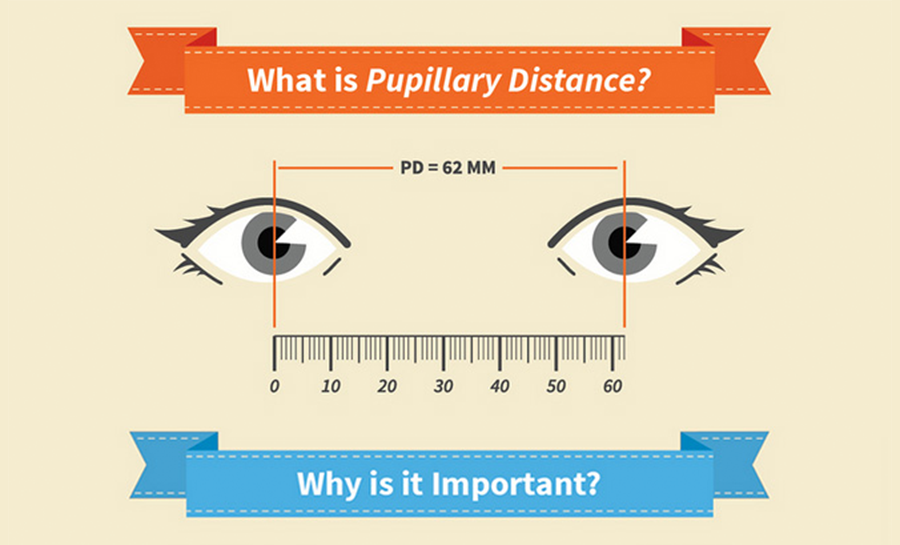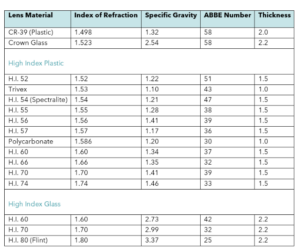Are your beloved frames still perfect, but your vision isn’t quite as clear as it once was? Discover how to effortlessly refresh your sight and extend the life of your favorite eyewear without buying an entirely new pair of glasses or sunglasses! This guide demystifies the process of getting new replacement eyeglass lenses, empowering you to make informed choices. Learn essential pre-assessment steps, explore diverse service options, and understand the cost factors involved to ensure crystal-clear vision. Unlock the full value of your existing frames and see the world clearly again, with all the resources you need at your fingertips.
Essential Preparations for Eyeglass Lens Replacement

Embarking on the journey to get new replacement eyeglass lenses for your existing frames requires careful planning. Before you consider upgrading your vision with fresh optics, it’s critical to conduct a thorough pre-assessment. This ensures a seamless process, optimal vision correction, and ultimately, a successful lens swap.
Verifying Your Prescription and Pupillary Distance
Accurate vision correction hinges on precise data. Two paramount pieces of information are your current eye prescription and your Pupillary Distance (PD). These details are fundamental for crafting replacement eyeglass lenses that provide clear, comfortable vision. Without them, your new lenses might not deliver the visual acuity you expect, leading to discomfort or even eye strain.
Current Prescription Validity for New Lenses
The cornerstone of effective lens replacement is an up-to-date eye prescription. Your vision can change over time, and a prescription that was valid a few years ago may no longer accurately reflect your current visual needs. Optometrists typically recommend an eye exam every one to two years, as prescriptions generally have a validity period. Using an expired prescription for your replacement eyeglass lenses can result in suboptimal vision, blurriness, headaches, and even eye fatigue.
Always ensure you have the most recent prescription details. If your last eye exam was more than two years ago, or if you’ve noticed any changes in your vision, scheduling a new comprehensive eye examination in early 2025 is highly advisable. This step guarantees that your new prescription lenses are perfectly tailored to your current refractive errors and visual requirements, providing optimal clarity and comfort for daily activities.
Acquiring Your Essential Pupillary Distance (PD) for Accurate Fit
Beyond your prescription, Pupillary Distance (PD) is an equally vital measurement for custom-made replacement eyeglass lenses. PD is the precise distance in millimeters between the centers of your pupils. This measurement ensures that the optical center of each lens aligns perfectly with your pupils, preventing prismatic effects that can cause dizziness, headaches, or double vision. An accurate PD is crucial for maximizing the effectiveness of your new optical lenses.
You can often obtain your PD from your optometrist after an eye exam. Some online retailers also offer tools or instructions for measuring your PD at home, though professional measurement is always recommended for the highest accuracy. Whether you’re getting your replacement eyeglass lenses from a local optical shop or an online vendor, providing an accurate PD ensures your vision through the new lenses is sharp and comfortable, centered exactly where it needs to be.
Assessing Your Existing Frames for New Lenses
While the appeal of simply replacing your eyeglass lenses to refresh your eyewear is strong, it’s essential to critically evaluate your current frames. Not all frames are suitable candidates for new replacement eyeglass lenses, and assessing their condition can prevent potential disappointment or damage during the process.
Identifying Frames Suitable for Lens Replacement
The suitability of your existing frames for lens replacement primarily depends on their structural integrity and design. Full-rim frames, which completely encircle the lens, are generally the most straightforward for eyeglass lens replacement. Semi-rimless frames (where the lens is held by a partial rim and a nylon cord) and rimless frames (where the lenses are drilled and mounted directly to the bridge and temples) require more delicate handling and may not always be viable options if they show signs of stress or damage.
Inspect your frames thoroughly for any cracks, deformities, or signs of weakening, especially around the screws, hinges, and where the lenses are seated. Even minor damage can compromise the frame’s ability to hold new optical lenses securely, increasing the risk of breakage during the lens insertion process. A professional optical specialist can offer an expert opinion on whether your frames are robust enough to accommodate new prescription lenses without issue.
When considering new replacement eyeglass lenses for existing frames, it’s also worth thinking about other eyewear options. For instance, if you’re looking to update your look or need specialized vision protection for outdoor activities, exploring durable and stylish options like mens sunglasses might offer a more comprehensive solution that aligns with both your vision needs and personal style preferences for 2025.
Understanding Frame Material Durability and Age Considerations
The material of your frames plays a significant role in their longevity and suitability for replacement eyeglass lenses. Common materials include acetate (a type of plastic), metal alloys (like stainless steel or titanium), and TR90 (a flexible plastic). Each material has different properties regarding durability, flexibility, and resistance to wear and tear. Acetate frames, while stylish, can become brittle over many years, making them prone to cracking during lens insertion. Metal frames can corrode or bend, weakening the frame structure.
Frames that are several years old, regardless of material, may have accumulated unseen stress from daily use, temperature changes, and exposure to oils and sweat. These “age considerations” mean that even a frame that appears intact might be compromised structurally. Attempting to insert new replacement eyeglass lenses into an aged or fatigued frame carries a higher risk of damage to the frame itself. Understanding your frame’s material and its typical lifespan can help you make an informed decision on whether to proceed with eyeglass lens replacement or invest in new frames altogether. For a comprehensive selection of replacement lenses to suit various frame types and materials, explore the options available at replacement eyeglass lenses, which can help determine if new optics are feasible for your current eyewear.
Comprehensive Overview of Eyeglass Lens Replacement Services

Once your prescription and frame suitability are confirmed, the next crucial step is selecting a reliable service provider for your replacement eyeglass lenses. The market offers a diverse array of options, from convenient online mail-in services to traditional in-person optical centers. Understanding the strengths of each can help you choose the best fit for your specific needs, whether you prioritize budget, speed, or personalized care for your new optical lenses.
Leading Online Mail-In Replacement Providers
Online mail-in services have revolutionized the process of acquiring replacement eyeglass lenses, offering unparalleled convenience and often more competitive pricing. These providers allow you to ship your existing frames, have new prescription lenses installed, and receive them back, all without leaving your home. They are ideal for individuals comfortable with online transactions and precise self-measurement for their new lenses.
39DollarGlasses: A Budget-Friendly Option for Prescription Lens Replacement
For those seeking an economical solution for prescription lens replacement, 39DollarGlasses stands out. As its name suggests, this service focuses on affordability, making replacement eyeglass lenses accessible without compromising on basic quality. They offer a straightforward process for mailing in your frames and getting standard single-vision or progressive lenses replaced at a competitive price. While their strength lies in value, premium coatings or highly specialized lens types might incur additional costs, but they remain a solid choice for a cost-effective lens swap.
LensDirect: Inclusive Coatings and Support for Designer Frames
LensDirect distinguishes itself with its commitment to quality and a broad range of inclusive lens coatings. When opting for replacement eyeglass lenses through LensDirect, customers often find standard anti-reflective, UV protection, and scratch-resistant coatings are included, enhancing the durability and performance of their new lenses. They are also known for their expertise in handling a variety of frames, including designer frames, ensuring that your high-value eyewear receives the professional care it deserves during the re-lensing process. Their customer support aims to guide you smoothly through every step of getting your optical lenses refreshed.
Overnight Glasses: Rapid Turnaround Time for Urgent Needs
When time is of the essence, Overnight Glasses lives up to its name by offering one of the fastest turnaround times for replacement eyeglass lenses in the industry. For individuals with urgent needs, such as a damaged primary pair of glasses, their expedited lens replacement service can be a lifesaver. They leverage advanced processing to ensure that your new lenses are accurately cut and fitted quickly, minimizing the period you are without your essential eyewear. This speed, however, is a premium feature, making it ideal for urgent lens replacement situations rather than routine updates.
Boomerang (by 1-800-Contacts): Durable Lenses and Strong Warranties
Boomerang, a service backed by the trusted 1-800-Contacts brand, prioritizes durable lenses and robust warranties. They understand that replacement eyeglass lenses are an investment, and their offerings reflect a focus on longevity and customer satisfaction. Their lens options are designed for resilience, and they typically come with generous warranties that cover various forms of damage, providing peace of mind. This emphasis on lens durability makes Boomerang an excellent choice for those who need hard-wearing optical lenses for active lifestyles or who want assurance that their lens replacement will last.
Eyeglasses.com: Premium Lens Options for High-End Frames
Eyeglasses.com caters to a more discerning clientele, offering an extensive selection of premium lens options for high-end frames. Whether you require advanced progressive designs, specialized coatings for digital eye strain, or specific tints for outdoor activities, Eyeglasses.com provides a comprehensive range. They are adept at handling intricate lens replacements for complex prescriptions and luxury frames, ensuring precision and maintaining the integrity of your valuable eyewear. Their expertise ensures that your new lenses meet the highest standards of optical clarity and performance.
LensFactory: Specialist Mail-In Lens Replacement Service
LensFactory positions itself as a dedicated specialist mail-in lens replacement service. Their entire operation is streamlined around efficiently and accurately replacing eyeglass lenses in existing frames. They pride themselves on a wide selection of new lenses and coatings, catering to various vision needs and preferences, from basic single vision to complex progressive and bifocal optical lenses. Their focused approach often translates into meticulous attention to detail and reliable service for your lens swap.
Lensabl: Dedicated Service for Replacing Lenses in Existing Frames
Lensabl is a prominent online platform specifically designed for replacing lenses in existing frames. Their user-friendly process simplifies eyeglass lens replacement, making it accessible to a wide audience. You select your lens type, send in your frames, and receive them back with your new lenses. They offer a range of options, including blue light filtering, photochromic, and high-index lenses. For those exploring online options, Lensabl stands out, much like how one might seek out the best online prescription eyeglasses when starting from scratch. Their specialized service makes the lens replacement process seamless and convenient.
Reputable In-Person Optical Centers and Opticians
While online services offer convenience, in-person optical centers and local opticians provide a hands-on approach and immediate expert consultation for lens replacement. This can be invaluable for complex prescriptions, unique frame types, or when you prefer face-to-face interaction and fitting services for your new lenses.
LensCrafters: Local Convenience with Specific Frame Requirements
LensCrafters is a well-known chain offering local convenience for eyeglass lens replacement. With numerous physical locations, you can visit a store, get immediate assistance, and sometimes even receive same-day service for new lenses, depending on lens availability and prescription complexity. It’s important to note that LensCrafters often has specific frame requirements for lens replacement; they may primarily accept frames purchased from their stores or brands they carry, or charge a premium for outside frames. Always inquire about their policy on replacing optical lenses in your existing frames before visiting.
BJ’s Optical: Affordable In-Store and Online Options
BJ’s Optical, typically found within BJ’s Wholesale Club locations, offers a blend of affordable in-store and online options for prescription lens replacement. Members can take advantage of competitive pricing for new lenses and eye exams. Their in-store optical centers provide personalized fitting and adjustment services, while some lens replacement options may also be accessible through their online portal. This dual approach provides flexibility and value for those seeking a practical solution for their eyeglass lens replacement needs.
Local Eye Doctors and Opticians: Best for Complex Prescription Lens Replacement
For complex prescription lens replacement or unique frame challenges, your local eye doctors and opticians are often the best choice. These independent or smaller chain establishments offer highly personalized service and expert advice. They can meticulously measure and fit new lenses for specialized prescriptions, including prism corrections or highly customized progressive optical lenses. Their experience with various frame materials and designs means they can often handle challenging frame types or delicate lens swaps that online providers might decline. Opting for your local optician ensures a precise fit, immediate adjustments, and ongoing support for your replacement eyeglass lenses.
To explore a wide range of replacement eyeglass lenses and find solutions that fit your specific needs and frame types, whether for mail-in convenience or to understand the scope of available options before consulting an optician, visit replacement eyeglass lenses. This can help you identify suitable lens materials and coatings, guiding your decision for your next vision upgrade.
Decoding the Cost of Replacement Eyeglass Lenses

Understanding the financial implications of acquiring replacement eyeglass lenses is crucial for making an informed decision. The total cost isn’t fixed; it varies significantly based on numerous factors, from the complexity of your vision correction to the advanced materials and protective coatings you choose for your new optical lenses. Being aware of these elements helps you anticipate expenses and select options that best fit your budget and visual needs.
Factors Influencing Total Lens Replacement Cost
Several key variables directly influence the final price you’ll pay for your prescription lens replacement. These elements encompass everything from the basic lens type to specialized treatments and the service provider you select. Navigating these choices effectively can lead to significant savings or investments in superior lens performance.
Average Cost to Replace Eyeglass Lenses
The average cost to replace eyeglass lenses can range widely. For standard single-vision plastic lenses without special coatings, you might expect to pay from $40 to $100 per lens, or $80 to $200 for a pair. However, this is merely a starting point. As you add features, the price increases. For instance, basic progressive lenses can begin at $150-$250 per lens, while high-end options with advanced features can easily exceed $400-$600 per lens, highlighting the diverse pricing tiers for new lenses.
Impact of Prescription Complexity on Pricing (e.g., progressive lens replacement cost)
The complexity of your vision prescription is a major determinant of lens replacement cost. Simple prescriptions for nearsightedness or farsightedness are typically the least expensive. However, if your prescription includes astigmatism correction, significant cylinder power, or requires prism to correct eye alignment, the manufacturing process becomes more intricate, leading to higher costs for your optical lenses.
Furthermore, multifocal lens designs, such as bifocal lenses or progressive lenses, command a premium. The progressive lens replacement cost, in particular, is elevated due to the advanced technology required to create a seamless transition between different focal powers for distance, intermediate, and near vision. These sophisticated designs offer convenience by eliminating the need for multiple pairs of glasses, but their complexity in grinding and fitting makes them more expensive than single-vision options. For those considering multifocal solutions, understanding the nuances of different types, such as bifocal reading glasses clear on top, can further clarify how specific designs impact the overall cost of replacement lenses.
Understanding Eyeglass Lens Materials and Advanced Coatings
Beyond your prescription, the choice of lens material and the application of advanced lens coatings significantly contribute to the total lens replacement cost. Each option offers distinct benefits in terms of durability, visual clarity, weight, and protection, justifying their varying price points.
Comparing Eyeglass Lens Materials: Polycarbonate, High-Index, Trivex, and Nylon
Choosing the right eyeglass lens material is essential for both comfort and performance. Each material boasts unique properties that cater to different needs and budgets:
- Polycarbonate Lenses: These are a popular, cost-effective choice for replacement eyeglass lenses, especially for children’s glasses or safety eyewear, due to their exceptional
impact resistance. They are significantly thinner and lighter than standard plastic lenses, offering good UV protection. While generally affordable,polycarbonate lensesmight exhibit slight chromatic aberration (color fringing) compared to higher-end materials. - High-Index Lenses: Designed for individuals with strong prescriptions,
high-index lensesare the thinnest and lightestoptical lensesavailable. Their ability to bend light more efficiently means less material is needed, resulting in a more aesthetically pleasing appearance and reduced weight, especially forthick prescription lenses. This superior thinness and lightness come at a higherlens material cost. - Trivex Lenses: Often considered a premium alternative to polycarbonate,
Trivex lensesoffer an excellent combination ofimpact resistance, superior optical clarity (less chromatic aberration), and lightness. They are a great choice for those who prioritize crisp vision and durability. TheTrivex materialtypically sits at a slightly higher price point than polycarbonate. - Nylon Lenses: Less common but highly durable and flexible,
nylon lensesare often used in sports eyewear or rimless frames due to their resilience and ability to withstand significant bending without cracking. They offer good optical quality and can be a specialized, albeit potentially more expensive, choice foractive lifestyles.
Value of Essential Lens Coatings: Anti-Glare Coating Replacement, UV Protection, and Scratch Resistance
Adding essential lens coatings can greatly enhance the performance, durability, and comfort of your new lenses, impacting the overall cost of replacement lenses.
- Anti-Glare Coating Replacement (AR Coating): Also known as
anti-reflective coating, this multi-layered treatment virtually eliminates reflections from the front and back surfaces of your lenses. This improvesvisual clarity, reduces eye strain (especially during nighttime driving or computer use), and makes your eyes more visible through your glasses. While it adds to theanti-glare coating cost, the enhanced aesthetics and comfort are often worth the investment. - UV Protection: Integrated into most modern
eyeglass lensesor added as a coating,UV protectionshields your eyes from harmful ultraviolet A and B rays. This is crucial for long-term eye health, helping to prevent conditions like cataracts and macular degeneration. This essentiallens enhancementis often a standard inclusion but can sometimes be an additional cost factor. - Scratch Resistance: A
scratch-resistant coatingis a hard, clear layer applied to the lens surface to make it more durable and less prone to scratches. While no lens is 100% scratch-proof, this coating significantly extends the lifespan of yourreplacement eyeglass lenses, protecting your investment. It’s almost universally recommended and is a small but valuable addition to thelens swapcost.
Photochromic Lens Options and Their Added Value
Photochromic lenses, often referred to by the brand name Transitions®, offer significant added value by adapting to changing light conditions. These versatile lenses are clear indoors but automatically darken when exposed to ultraviolet (UV) light outdoors, functioning as sunglasses. This eliminates the need to switch between prescription eyeglasses and prescription sunglasses, providing continuous UV protection and comfort.
The convenience and dual functionality of photochromic lens options contribute to their higher replacement lens cost compared to standard clear lenses. Factors like the specific photochromic technology, the speed of darkening and clearing, and the range of available tints can further influence their price. For many, the ability to have a single pair of glasses serve multiple purposes outweighs the increased initial investment for their new optical lenses.
To explore a comprehensive range of replacement eyeglass lenses and gain a clearer understanding of the various materials, coatings, and prescription options available, which can directly influence the cost and suitability for your needs, visit replacement eyeglass lenses. This resource can help you compare choices and estimate potential expenses for your vision upgrade.
Your Clear Vision Journey: Mastering Eyeglass Lens Replacement
Navigating the world of replacement eyeglass lenses doesn’t have to be daunting. As we’ve explored, achieving optimal vision and extending the life of your cherished frames boils down to careful preparation, informed decision-making regarding service providers, and a clear understanding of cost factors.
Firstly, precise preparation is paramount. Always ensure your eye prescription is current and your Pupillary Distance (PD) is accurate. These fundamental measurements guarantee that your new optical lenses align perfectly with your unique visual needs, preventing discomfort and maximizing clarity. Equally vital is a thorough assessment of your existing frames; inspect them for structural integrity, considering their material and age. While many frames are excellent candidates for a lens swap, recognizing unsuitable ones can prevent potential damage or disappointment. Don’t overlook the potential for upgrading your vision with a new pair of sunglasses if your needs extend beyond clear lenses, perhaps for specialized outdoor activities.
Secondly, the market offers a spectrum of reputable service providers, each with distinct advantages. Online mail-in services like 39DollarGlasses, LensDirect, Overnight Glasses, Boomerang, Eyeglasses.com, LensFactory, and Lensabl provide unparalleled convenience and often competitive pricing, ideal for those comfortable with remote transactions and self-measurements. Conversely, in-person optical centers such as LensCrafters, BJ’s Optical, and especially your local independent eye doctors and opticians, offer invaluable hands-on expertise, immediate consultations, and precise fitting services—critical for complex prescriptions or delicate frame types. Choosing the right provider hinges on your priorities, whether that’s budget, speed, or personalized care.
Finally, demystifying the cost of new lenses empowers you to make financially sound decisions. Lens replacement costs vary significantly based on prescription complexity, with progressive lenses naturally incurring higher prices than single-vision options. The choice of lens material also plays a crucial role; polycarbonate, high-index, Trivex, and nylon each offer unique benefits in terms of thinness, lightness, and impact resistance, influencing the overall price. Furthermore, essential lens coatings—such as anti-glare, UV protection, and scratch resistance—are wise investments that enhance visual comfort, protect eye health, and prolong the lifespan of your lenses, albeit with an added cost. Photochromic lens options, offering the convenience of adaptive tinting, represent another value-added feature that impacts the final expense.
In conclusion, by meticulously preparing, selecting the right service, and understanding the cost drivers, you’re well-equipped to undertake a successful eyeglass lens replacement. This process not only revitalizes your vision but also champions sustainability by giving your existing frames a new lease on life. Whether you prioritize affordability, rapid service, or bespoke optical solutions, the resources are available to ensure your journey to clearer vision is seamless and satisfying. For a vast selection of options to begin your journey, explore everything from standard replacements to specialized optical solutions at replacement eyeglass lenses.

Leave a Reply